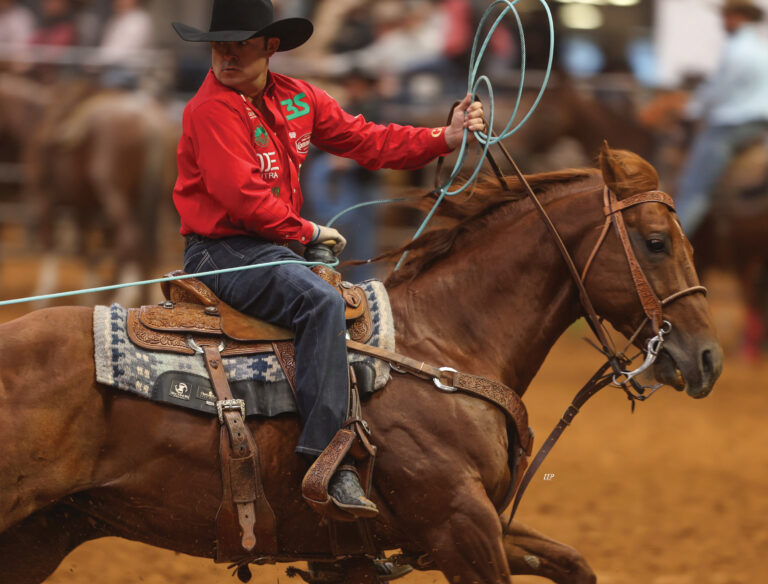The subject of changing rodeo formats is one of the most complicated and controversial cowboy conversations of our time. There are two sides to this story, too, and even the closest of forever friends are divided on this topic. Traditional old-schoolers are steadfast in their belief that the best man is most likely to win when the drawing-contest factor is minimized over the course of a multi-head average. The new wavers want to stir things up a little, and feel a format that shows fans a winner every performance, then deciding the champ in a sudden death, one-head finals at rodeo’s end is the way to go. We decided to open up a public dialogue with various viewpoints from within the industry, with the understanding that we sometimes have to agree to disagree on how we’re going to achieve the universal goals of growing the sport and putting more money in cowboys’ pockets.
This article originally appeared in the July 2021 issue of The Team Roping Journal.
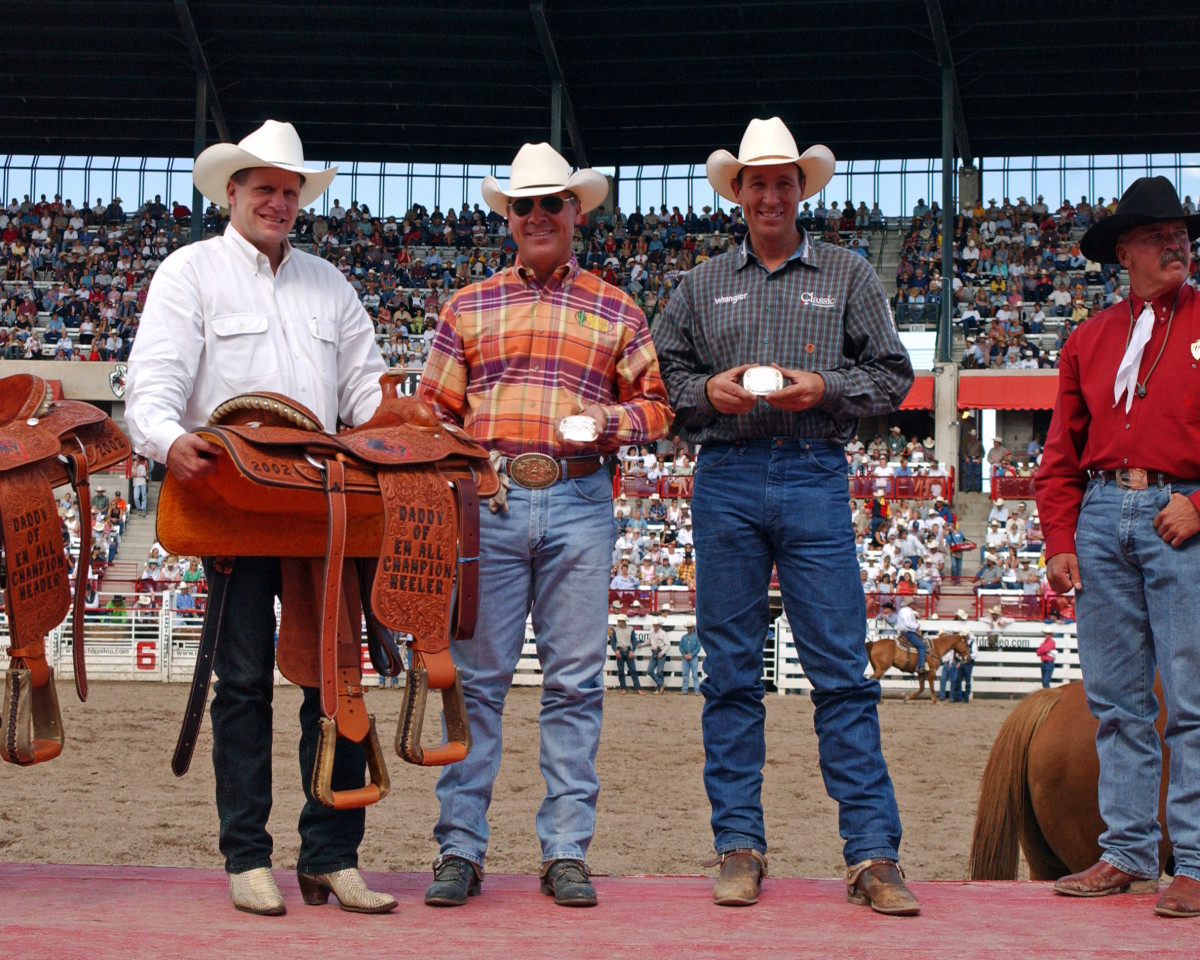
Dan Hubbell photo
Whatever it Takes
Hall of Fame Heeler Clay Cooper has never been one to complain. He’s not starting now, and feels so strongly that the generation nexter who sacrifices his prime to win seven gold buckles has more to show for it at career’s end than he did that he’s willing to buck even his own old beliefs if it could possibly mean progress.
Want to learn from Clay O’? Subscribe to Roping.com today.
“Rodeo is traditional in the way it’s been for years and years,” Champ said. “I’m for whatever format will make the sport bigger and better, so the athletes of today and tomorrow can make more money than we did in our day. The cream’s going to rise to the top, regardless of the format you use. Though I want it to be as fair as possible for everyone entered—and respecting the rulebook is crucial—if we have to tinker with tradition a little for cowboys to make more money, then maybe we need to at least give it a try.
National Western Stock Show Debuts New Tournament-Style Pro Rodeo Format
“Everyone always says it’s too bad we didn’t become multi-millionaires for all the success we had. Even if we don’t love all the changes it might take to make that happen for future generations of professional rodeo cowboys, if we don’t try something new, we can’t complain if it doesn’t change. My plan was to always try and win first, whether it was a one-header or the 10-header at the NFR (Wrangler National Finals Rodeo). Either way, it’s game on and the fastest time wins. But the bottom line is cowboys winning more money.”
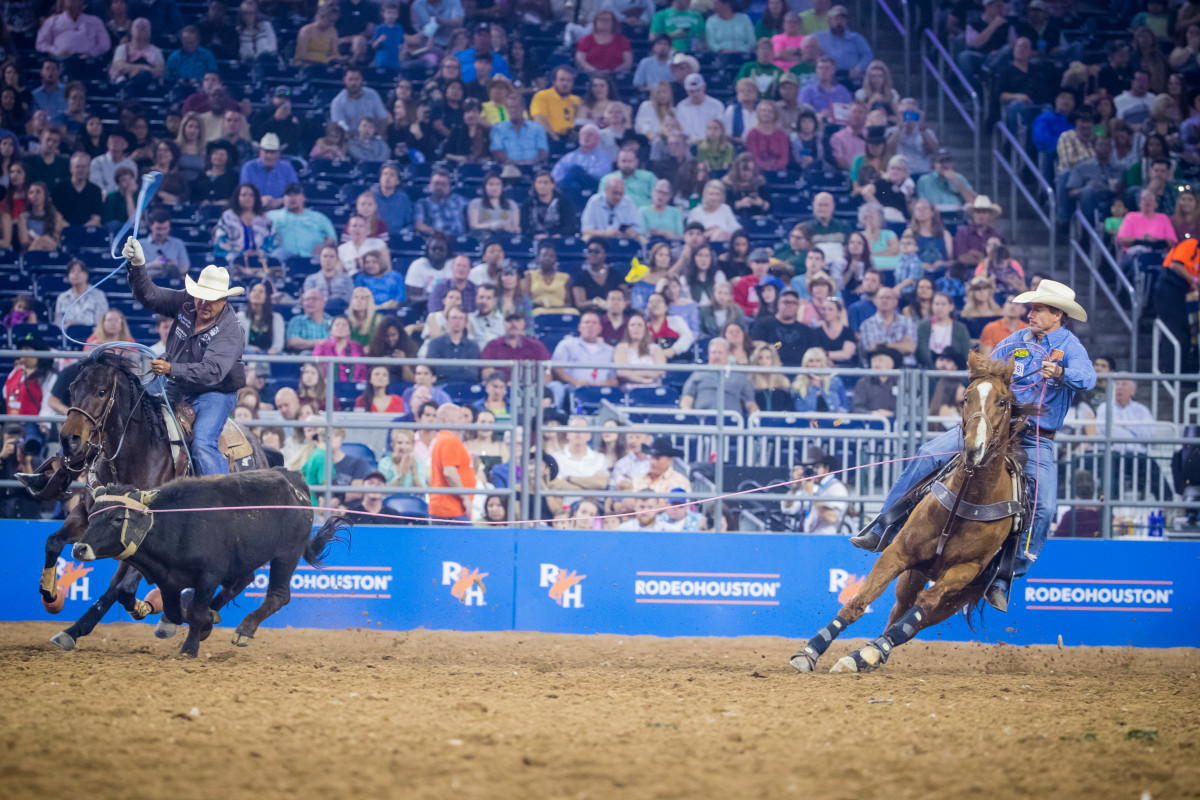
Dan Hubbell Photo
Let’s Not Cross the Line
World Champion Header Matt Sherwood was elected by his peers—Professional Rodeo Cowboys Association team ropers who have always made up the majority of the membership—to represent their best interest as their event rep. He takes that responsibility very seriously.
Sherwood and other event reps aren’t always consulted before new rodeo formats are approved, which is frustrating for all. Sherwood is, however, happy to report that longtime rumblings of eliminating the average at the NFR and making the 10th round so top heavy in pay that it would overwhelmingly influence yearlong gold-buckle races based on who drew best in Round 10 seem to have been hushed.
“No one is supportive of that concept in the contestant world,” Sherwood said. “I don’t know one person who thinks that’s a good idea. Doing that would all but erase the entire regular season, which for rodeo cowboys is grueling. The NFR is already very heavily weighted when it comes to who wins the world.”
No rodeo is perfect, but most cowboys prefer multi-head averages, like the four-headers held during this spring’s California run in Red Bluff and Clovis, or the five-head California Rodeo in Salinas, which is traditionally held in July, but has been bumped by COVID to September and will for 2021 serve as the PRCA Tour Finale with very limited entries.
“Salinas is most team ropers’ favorite rodeo of the year,” Sherwood said. “For one entry fee, you get to rope one steer every day for $2,500 go-rounds—two on Sunday, if you make the short round—and enjoy the cool weather through the $6,000-$7,000 average paid Sunday afternoon. If you draw a couple tough steers in a five-header, you still have a chance.”
Brooks Dahozy and Walt Woodard Win Team Roping at California Rodeo Salinas
Sherwood has enjoyed some personal success at major events where one run determines the winners, including his 2018 RodeoHouston title heading for Walt Woodard. Then there’s the $10,000 Sherwood won for third at the 2021 American heeling for Derrick Begay, when they finished right behind champs Erich Rogers and Paden Bray, who won $100,000 per man on one run ($50,000 of it counted), and reservists Luke Brown and Wesley Thorp, who each earned $25,000 on one steer. Just one illustration of one rodeo’s impact: At press time the end of May, Luke was fifth in the world with $26,687 won.
“There’s a big difference even among the rodeos where it all comes down to one steer,” Sherwood said. “When Walt and I won Houston, we did good in the first three rounds to advance, did good in the wild card round, did good in the top-10 round and again in the final round to win it. So it wasn’t just a coin flip that we won it. What makes the Houston format work in my mind is how many people win good money at that one rodeo. There are four checks paid every night, so a lot of people leave Houston with good money. That’s what makes it work.”
There are many new PRCA-sanctioned events of controversy—some rodeos, others jackpots. One that received a lot of buzz and banter earlier this year was the San Angelo (Texas) Cinch Chute-Out in April, which has only been sanctioned in recent years. Ten teams were invited, and the $10,000 Rogers and Bray each won counted toward the world standings. Some say it’s just another example of stacking the deck for the rich to get richer, while the majority of the membership has no shot at winning that money. That’s the same complaint that killed the Wrangler Champions Challenge rodeos a few years back.
“I’m fine with those 10 guys having a chance to win extra money, but I’m not in favor of that money counting for the same reason I don’t think money won at The American should count,” Sherwood said. “The top 10 from the previous year are seeded into The American with a few more who manage to grind it out through the Semifinals to get to Arlington, like Begay and I did this year. There’s no way it’s best for the majority of the membership to give the best guys such a huge advantage. Contestants also have a tough time with the fact that there is no payback in the rounds of 16 and 8 at The American. So unlike Houston, very few guys leave that rodeo with good money.
“I’m all about cowboys having the chance to win more money, but when you can basically qualify for the NFR at one rodeo, take an NFR spot or two away from everyone else and majorly impact the world championship race because it’s so top loaded at the end—that’s way different from Houston, where 40 guys arrive at the rodeo with an equal shot at the big money, and so many guys leave there with good money.”
The PRCA is a membership organization set up to serve all members, and per public record, membership has declined. Catering to the top-end minority is risky business when you’re trying to retain or better yet attract more members. The PRCA rulebook calls for the association to take 6% of the purse at all sanctioned events straight off the top before it’s paid out. Some say that’s why so many more events are being approved today that never would have made the sanctioning cut in the past. All hope that that extra money in the coffers will be used to offer more benefits to all member cowboys.
“There’s a time and a place for everything when it comes to rodeo formats,” Sherwood said. “In general terms, I’m for rodeos that provide good opportunity for a lot of guys to win real money. Rodeos where only one team leaves with something significant to show for it are a joke, regardless of the format. Rodeos where if you add up all the money cowboys pay to get to that rodeo plus entry fees, and the cowboys are losing money putting on the rodeo do not make sense. It’s our fault we still keep showing up at rodeos that don’t pencil for contestants, but we also know that if we don’t go and everyone else does, we put ourselves at a disadvantage we can’t overcome.”
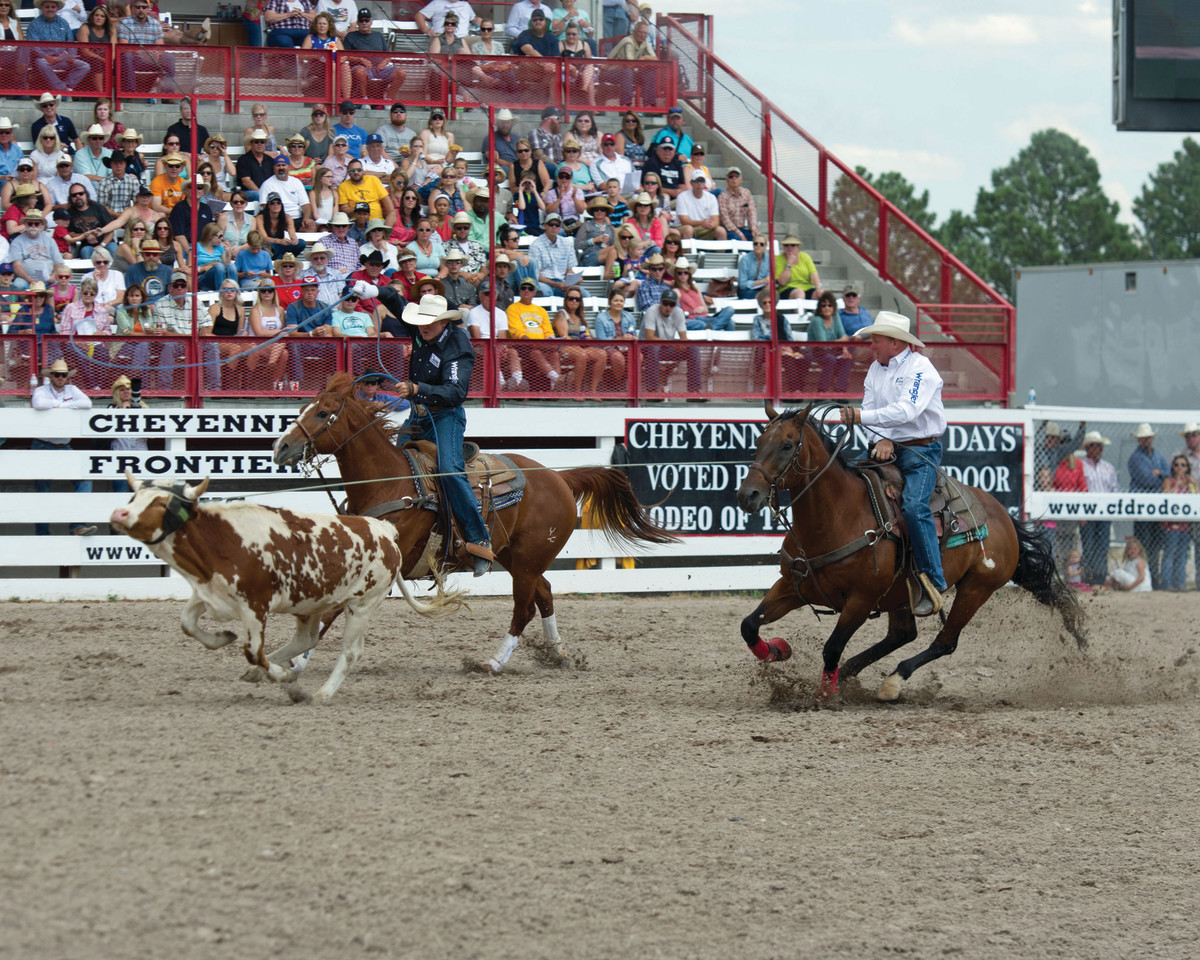
Dan Hubbell Photo
The Daddy
Cheyenne Frontier Days President and Chief Executive Officer Tom Hirsig and NFR Switch-Ender and Master Horseman J.D. Yates are dear old friends. They’ve talked through the format change that kicked in at The Daddy in 2019, and after a 2020 COVID cancellation, Cheyenne is back with the same format in 2021. While Yates isn’t sold on one run determining the winner at a rodeo of Cheyenne’s caliber, their deep mutual respect allows for civil conversations on this important subject.
The 2021 CFD runs July 24 through August 1. Instead of the traditional two-and-a-short format, 24 of the 144 teams that get in will rope in slack each morning. The top 12 rope a second steer in that afternoon’s performance, with the top four teams being paid and advancing to the Friday and Saturday semifinals performances before Sunday’s finals. The bottom 12 teams in each slack run a second steer that same morning, and are part of a consolation round. Twenty-four teams rope in the semifinals performances—12 each day—and the top six teams from each day get paid and move on to the 12-team finals, which pays eight places. It should be noted that Cheyenne formats vary, even among the timed-events.
“When we started this tournament-style format in 2019, we went from adding $50,000 per event to $67,000 per event (per side in the team roping),” said Hirsig, who’s from a foundation ranching family in the Cowboy State and roped at the 1987 National Finals Steer Roping. “Our TV contract with the Cowboy Channel accounts for some of it, and we also came up with more money as a committee. No matter how you slice it, $17,000 more in added money per event is like adding another major rodeo.
“One of the reasons we have this format is because the cowboys told us they needed to know when they were going to rope, so they could enter other rodeos around Cheyenne. This way, they know when they’re up, and run their first two steers the same day. This format is also more fair to the guys who draw up during a downpour, because they only have to beat the other guys up that day to advance. More importantly, when most cowboys get out of rodeo, they have little to nothing left. Added money depends on sponsor dollars, which depend on ticket sales. We had record attendance at our 100th anniversary at Cheyenne 25 years ago in 1996. Our attendance has steadily declined since. We had to try something different.”
Hirsig’s hope is that fans getting to see the winners every day will increase ticket sales, which will make more added money possible for cowboy friends like Yates and the young guns.
It Can Be Done: How Cheyenne Came Up with Equal Money in Breakaway
“Change is hard, but our crowd was noticeably more engaged when we used this format in 2019,” Hirsig said. “We don’t have the NFR crowd of rodeo people at Cheyenne. Eighty-five percent of our fans go to one rodeo a year or have never been to a rodeo before. We have to keep it simple for them to have fun and follow what’s going on. We all want the same thing, which is for rodeo to grow for our kids and grandkids, and for cowboys to make a living.”
Worth noting is that J.D. and his son, Trey, won $12,800 a man for third at Cheyenne in 2016, when pops also placed third in the steer roping and won the all-around. Chad Masters and Joseph Harrison won $10,750 a man the last year of the old two-and-a-short format in 2018. Dustin Bird and Trey won The Daddy in 2019, and were paid $11,900 apiece; Brenten Hall and Chase Tryan won second and earned $12,600 a man (go-round checks made the difference); and Dustin Egusquiza and Jake Long each cashed checks for $11,600 each. J.D. isn’t buying every bit of what his buddy’s selling, but knows Hirsig’s a cowboy at heart. And their friendship will never fade over rodeo formats.
“I’m a cowboy, and I talk to a lot of rodeo committees and hear their side of it,” J.D. said. “They tell me they can sell these new formats to the fans. The committees are thinking the general public wants to see the winners every day. What I say to my committee friends is that this can be worked out if the cowboys are compensated for it. The year Dustin and Trey won it, they had a no-time on their first steer in the semifinals, then came back and were fast enough on their second steer to get to the finals. We were taught to catch to win, so that’s hard for us old guys to go along with.
Dustin Bird and Trey Yates End Team Roping Partnership with Win at The 2019 Cheyenne Frontier Days
“The only way to sell this new stuff to me is to prove to me that cowboys are making more money with the new formats. If that turns out to be a fact, and cowboys are making more money this way, I’ll be good with it, even if I don’t love it. I’ll listen to any change where the cowboys get the benefit of the dollar and we’re respecting that (PRCA) rulebook. It took a long time to get those rules right, and we don’t need to be tossing them out the window now. We can’t start counting rodeos that have ground rules that conflict with our own rulebook. All I ask is that we abide by our bylaws, and do what’s best for the cowboys the PRCA is there to serve. That’s the point of the PRCA existing.”
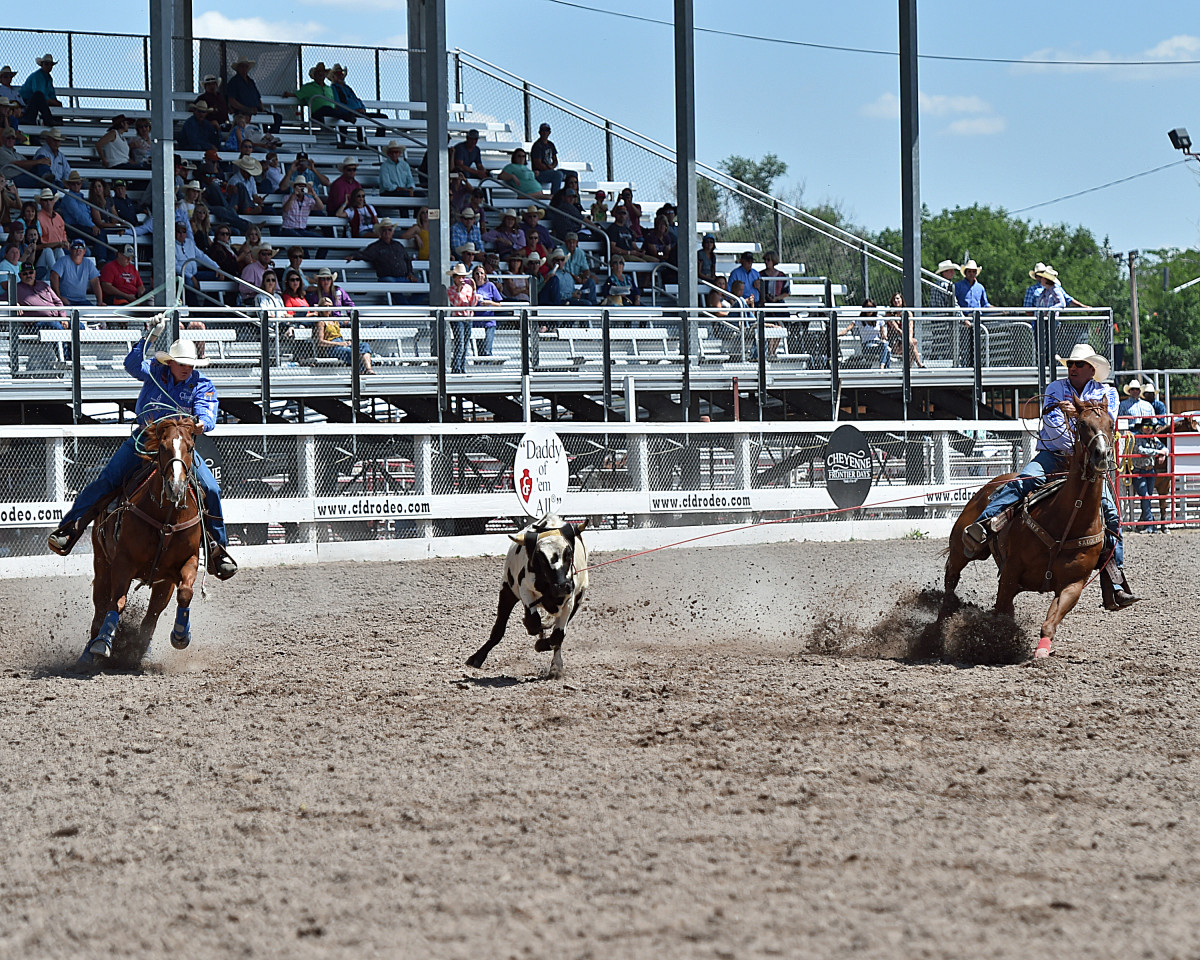
Some rodeo purists say that limiting rodeos has been the death of cowboy profits. J.D. roped at the NFR when he was 15. Now 60, that makes him a member in good standing for 45 years. It’s a little-known and not-so-fun fact that in 2010, when J.D. and Jay Wadhams won the BFI together, they were drawn out of the Reno Rodeo right there on the same grounds, because they didn’t meet the qualifications criteria. It happened again in 2021. We’re talking about a 21-time NFR team roper.
“The PRCA is built on membership, and without everyone’s dues there’s no organization,” J.D. said. “Every member should have the same opportunity, and it shouldn’t take someone three years to make his way into the good rodeos to play with the big boys, which is the only chance you have of making the NFR. The PRCA was set up to be inclusive, not exclusive.”









